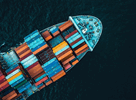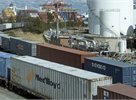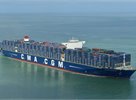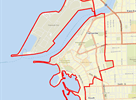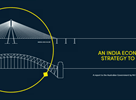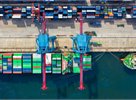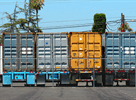
Australian Ports infrastructure not keeping up with global trends
We are an island nation heavily dependent on trade. Australia’s position as one of the top 25 trading countries in the world means international trade drives the ability to maintain and improve the Australian lifestyle. We need to ensure that we have the right investment strategy in place to competitively position Australia in global trade into the future.
If we don’t get the public policy settings right, we won’t be able to attract the right mix of public and private investment. On a recent trip to Asia I was reminded again that Australia is missing out because our port infrastructure is not keeping up with global trends.
A report from Deutsche Bank in 2018 found that “containerships larger than 15,000 teu make up just 10% of global capacity, but account for 45% of newbuild capacity”. Ports overseas are investing billions of dollars in response. The future of global trade is in the larger, more efficient and environmentally friendly Ultra Large Container Vessels. What we need is the port infrastructure necessary to enjoy the greater efficiencies, lower costs and reduced carbon footprint that come with those vessels.
A report by HoustonKemp Economists, commissioned by Port of Newcastle and released in January, looks at global shipping trends stemming from competitive pressures on shipping lines to lower costs. The report confirms what the global market is telling us: the world’s container ships and container terminals are getting bigger, while Australia’s infrastructure languishes in a former era. Suggestions by a senior ports figure recently that these ships are some decades away ignore the fact ships of more than 10,000 TEU are already calling at Port of Tauranga in New Zealand. They don’t visit Australia because there are no ports that can accommodate them. The future is a lot closer when these size vessels actually have a port that could handle them.
The best infrastructure projects in Australia’s history have been the ones undertaken in preparation for future needs – the Snow Hydro and the Harbour Bridge being two iconic examples. The projects that end up costing the taxpayers a fortune and never seem to get it completely right are those built after the need has become critical. The global trends in container trade and shipping are clear. Not keeping up will come at a financial and environmental cost to Australia.
Source: Craig Carmody is CEO of Port of Newcastle and formerly worked in shipping policy and strategy roles for the Maersk Group and the Australian Government.
-
Australian Governments Modern Manufacturing Strategy
-
Boxship owners see 13-year high in charter rates as carriers hunt for tonnage
-
DP World and UNICEF to support COVID-19 vaccine distribution
-
Buoyant ocean carriers set to roll out peak season surcharges months early
-
Trade protectionism a barrier to the recovery of global economies, warns ICS
-
Outlook for large widebody looks chilly in a hot freighter conversion market
-
EVEN AS THE WORLD STRUGGLES
-
Maersk to launch carbon neutral vessel
-
STATE PREMIERS URGED TO INTERVENE ON CROSS-BORDER ISSUES
-
PORT BOTANY RAIL DUPLICATION FAST TRACKED
-
Covid vaccine: is air cargo ready for 'the biggest product launch in history?
-
Logistics protests as Melbourne lockdown puts the brakes on supply chains
-
Demand driving transpacific prices sky high, with Asia-Europe benefiting too
-
Carriers follow through with capacity disicpline and blank more sailings
-
Indonesian Free Trade Agreement - economic opportunity opens up
-
Department of Agriculture turns away import vessel
-
Good Compliance Update - December 2019
-
Scale-less weighing of containers for SOLAS VGM
-
Patrick East Swanson Terminal Melbourne - Reductions in night shift road R&D operations
-
Shippers brace for delays as coronavirus keeps China's factories closed
-
Coronavirus containment measures and the impact on your China cargo.
-
2019/2020 Stink bug seasonal requirements
-
BAF calculator may help ease uncertainty over looming IMO 2020 fuel rule
-
From 15 to 5 in just a few years - shippers' declining choice of container carriers
-
Government money to boost Queensland export
-
Freight forwarding scam warning
-
Marine insurance case study
-
Australian Ports infrastructure not keeping up with global trends
-
Truckies heartened by support to stopping port surcharges
-
Victorian Transport Association (VTA) State Conference 2019 - Making the case for inland rail
-
Protection from tariffs a feature of Australia and Hong Kong deal.
-
BMSB UPDATE 45 - WA Biosecurity Alert









